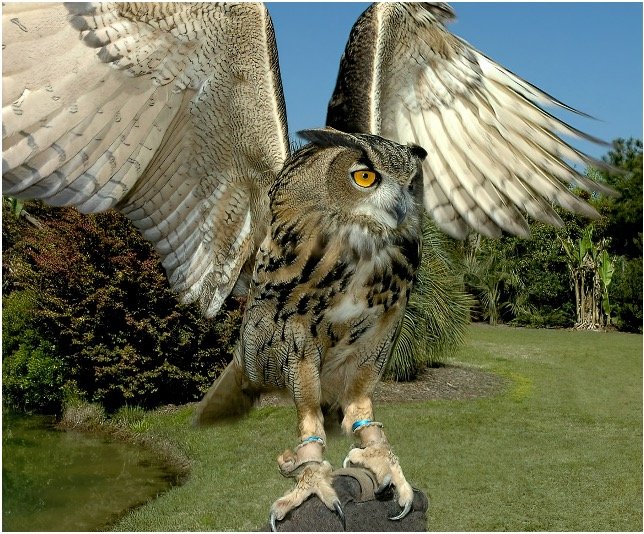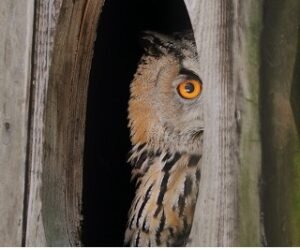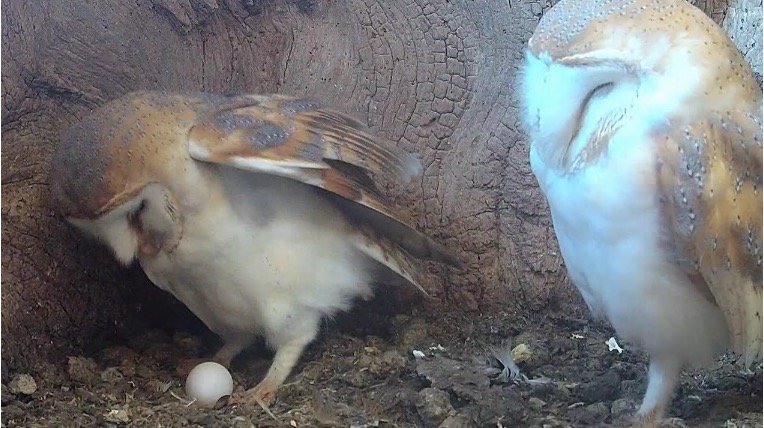
Owl Eggs
Owls are nocturnal birds of prey that can be found all over the world. They are distinguished by their distinctive facial features, which include large eyes, a hooked beak, and a circular facial disc that aids in sound focus and hunting. Owls have been observed laying eggs as part of their reproductive cycle.
Owl eggs are typically laid in nests built by the female owl, which are frequently located in elevated locations such as trees, cliffs, or burrows. The number of eggs laid by owls varies by species, but generally ranges from 1 to 12 eggs per clutch. The eggs are usually white or cream in color, with a smooth surface and an elliptical shape.
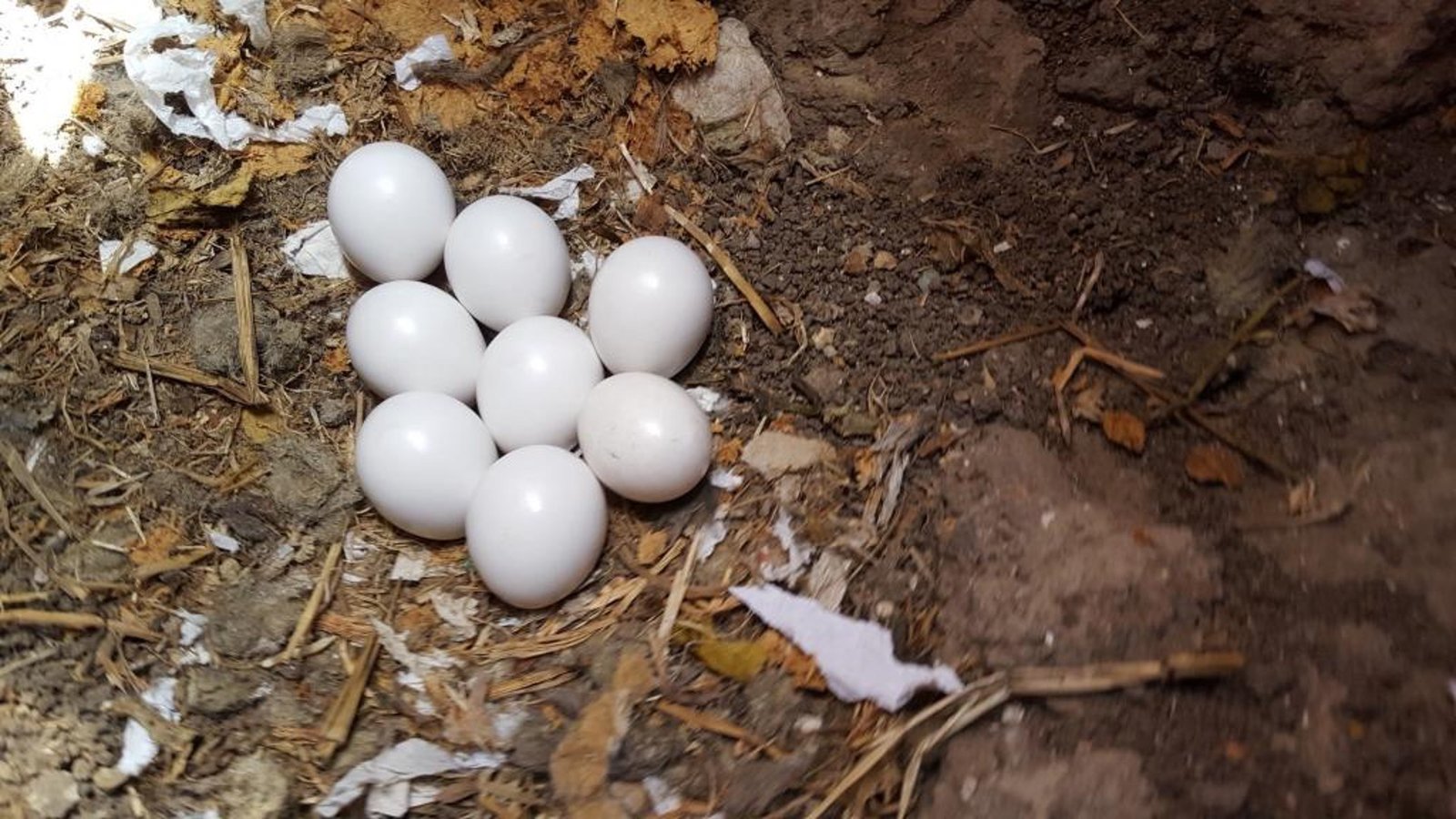
Owls typically lay their eggs from spring to early summer, though this varies depending on the species and location.
The female owl incubates the eggs for several weeks, during which time the male owl feeds both the female and the developing eggs. Once the eggs hatch, both parents will care for the young owlets until they are old enough to leave the nest on their own.
What Do Owl Eggs Look Like?
Owl eggs are typically white or off-white with a slightly rough surface. Owl eggs vary in size and shape depending on the species, but they are generally oval-shaped and tapered at one end.
Owl eggs are small in comparison to the adult bird’s size. The length of an owl egg can range from 1.2 to 2.5 inches, with the average length being around 1.8 inches.
The eggs of larger owl species are typically larger than those of smaller owl species. The surface of an owl egg is usually slightly rough or grainy, which helps the incubating parent owl provide traction.
Because the eggs are relatively fragile and easily damaged or broken, the female owl takes special care to protect and incubate them until they hatch.
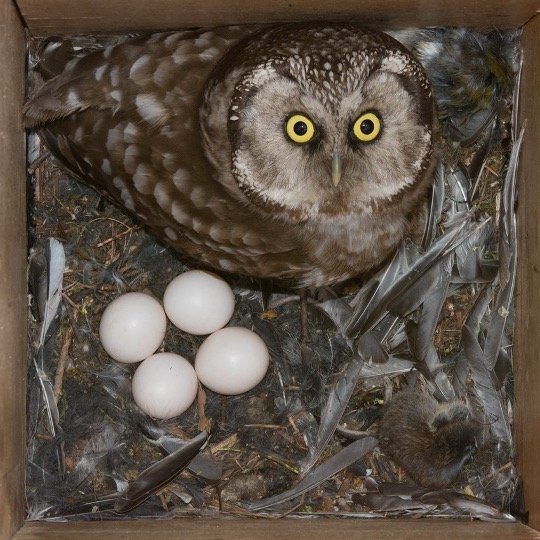
What Color Is Owl Egg?
The majority of owl eggs are white or off-white in color. The exact shade of white can vary depending on the species and the individual bird. Some owl species may lay eggs with a pink or brown tint, but the eggs are predominantly white.
The eggs of the Little Owl and the Long-eared Owl, for example, can be slightly grayish or brownish in color. The vast majority of owl eggs, however, are white or off-white in color.
The white color of owl eggs aids in camouflage and reduces visibility to predators. The rough texture of the eggshell also helps the incubating parent owls maintain traction while sitting on the eggs.

How Big Is An Owl Egg?
The size of an owl egg varies by species. The length of an owl egg can range from 1.2 to 2.5 inches (3 to 6.3 centimeters), with the average length being around 1.8 inches (4.5 centimeters).
The size of the egg can be influenced by a number of factors, including the female owl’s size, & age. In general, larger owl species lay larger eggs than smaller owl species.
Do Owls Lay Eggs?
Yes! Owls do lay eggs. Owls, like other birds, reproduce sexually and lay eggs to produce offspring. Female owls typically lay their eggs in a nest that they have constructed, which can be in a tree hollow, on a cliff ledge, or even on the ground. The number of eggs laid by a female owl varies according to species, but it can range from one to several.

When Do Owls Lay Eggs?
When owls lay their eggs varies depending on the species and geographical location. In general, owls are opportunistic breeders, which means they can breed at any time of year if the conditions are favorable and there is an adequate food supply.
However, many owl species have distinct breeding seasons that are determined by food availability and other factors. Some owl species in North America, for example, begin laying eggs in early spring, with the eggs hatching in early summer.
Other types of owls may breed in the late summer or early fall, with eggs hatching in the winter. Some owl species may lay their eggs in the winter in other parts of the world, such as Europe and Asia, with chicks hatching in early spring.
It’s also worth noting that some owl species, such as the Snowy Owl, only breed every two to three years, whereas others breed every year.

How Many Eggs Do Owls Lay?
The number of eggs laid by owls varies depending on the species, the female owl’s age. Most owl species lay between 1 and 7 eggs per clutch, with an average clutch size of 3 to 4 eggs.
Some owl species, such as the Barn Owl and the Great Horned Owl, lay larger clutches of eggs than others, with Barn Owls laying up to 7 eggs and Great Horned Owls laying 3 to 5 eggs.
Other species, like the Northern Pygmy Owl and the Elf Owl, have smaller clutches, with the Northern Pygmy Owl laying 2 to 5 eggs and the Elf Owl laying 2 to 4 eggs.
How Often Do Owls Lay Eggs?
The frequency of owl egg-laying is determined by the species, the female owl’s age and condition, and environmental factors such as food availability and climate.
Some owl species only breed once a year, while others breed more frequently, and still others only breed every other year. Some species, such as the Snowy Owl, may only breed when food is plentiful.

Where Do Owls Lay Eggs?
Depending on the species and the availability of suitable nesting sites, owls lay their eggs in a variety of locations. Some owl species prefer to lay their eggs in trees or on cliffs, while others prefer burrows or other underground cavities.
The following are some common locations where owls lay their eggs:
1. Trees: Many owl species, including the Great Horned Owl and the Barred Owl, lay their eggs in tree nests. These nests can be constructed from a variety of materials, such as sticks, leaves, and other debris.
2. Cliffs: Some owls, including the Barn Owl and the Snowy Owl, lay their eggs on cliffs or other high ledges. These birds may construct nests or simply lay their eggs on the ground.
3. Burrows: The Burrowing Owl and the Short-eared Owl, among others, lay their eggs in underground burrows. These burrows may have been excavated by the owl or may have been abandoned by other animals such as ground squirrels.
4. Man-made structures: Owls have been observed laying eggs in a variety of man-made structures, including buildings, bridges, and even nesting boxes provided by humans.
Do Owls Lay Eggs On The Ground?
Yes, some owl species lay their eggs on the ground. While the majority of owl species nest in trees, some lay their eggs on the ground or in burrows, crevices, or cavities.
The Burrowing Owl, for example, is known for nesting in underground burrows, often in abandoned prairie dog holes or other burrows. These owls frequently lay their eggs directly on the ground at the bottom of their burrows, and a single clutch can contain up to 12 eggs.
Similarly, the Short-eared Owl may build a shallow depression in the ground to lay its eggs in open grassy areas. Northern Saw-whet Owl eggs can be laid on the ground or in low bushes or shrubs.

How To Identify Owls eggs?
Owl eggs can be difficult to identify because they vary in size and color depending on the species. However, there are a few distinguishing characteristics that can assist you in identifying owl eggs:
1. Size and shape: Owl eggs are typically small and oval in shape, with one end more pointed than the other. The size and shape of owl eggs vary depending on species, but they are typically smaller than chicken eggs.
2. Color: The majority of owl eggs are white or off-white in color. Some species, however, may lay eggs with a slight pink or brown tint.
3. Texture: Owl eggs have a slightly rough or grainy texture that allows the incubating parent owl to grip the eggs and keep them from rolling around in the nest.
4. Location: Owls typically lay their eggs in a nest, which can be found in a tree, on the ground, in a burrow, or in a cavity. The location of the nest can assist you in determining which species of owl laid the eggs.
5. Behavior: Observing the behavior of adult owls near the nest can also aid in determining the species of owl that laid the eggs. Some species, for example, may be more vocal or active than others, or they may exhibit distinct hunting behaviors.
What Does An Owl Sound Like?
Can You Eat Owl Eggs?
No, eating owl eggs is not recommended. It is illegal in many countries to disturb, take, or possess the eggs or young of wild birds, including owls. Owls are protected by various wildlife conservation laws, and taking their eggs can be detrimental to their population.
Furthermore, eating owl eggs can be hazardous to one’s health. Wild bird eggs may contain pathogenic bacteria, parasites, or other contaminants that can make humans sick. As a result, consuming owl eggs or any other wild bird eggs is neither safe nor legal.
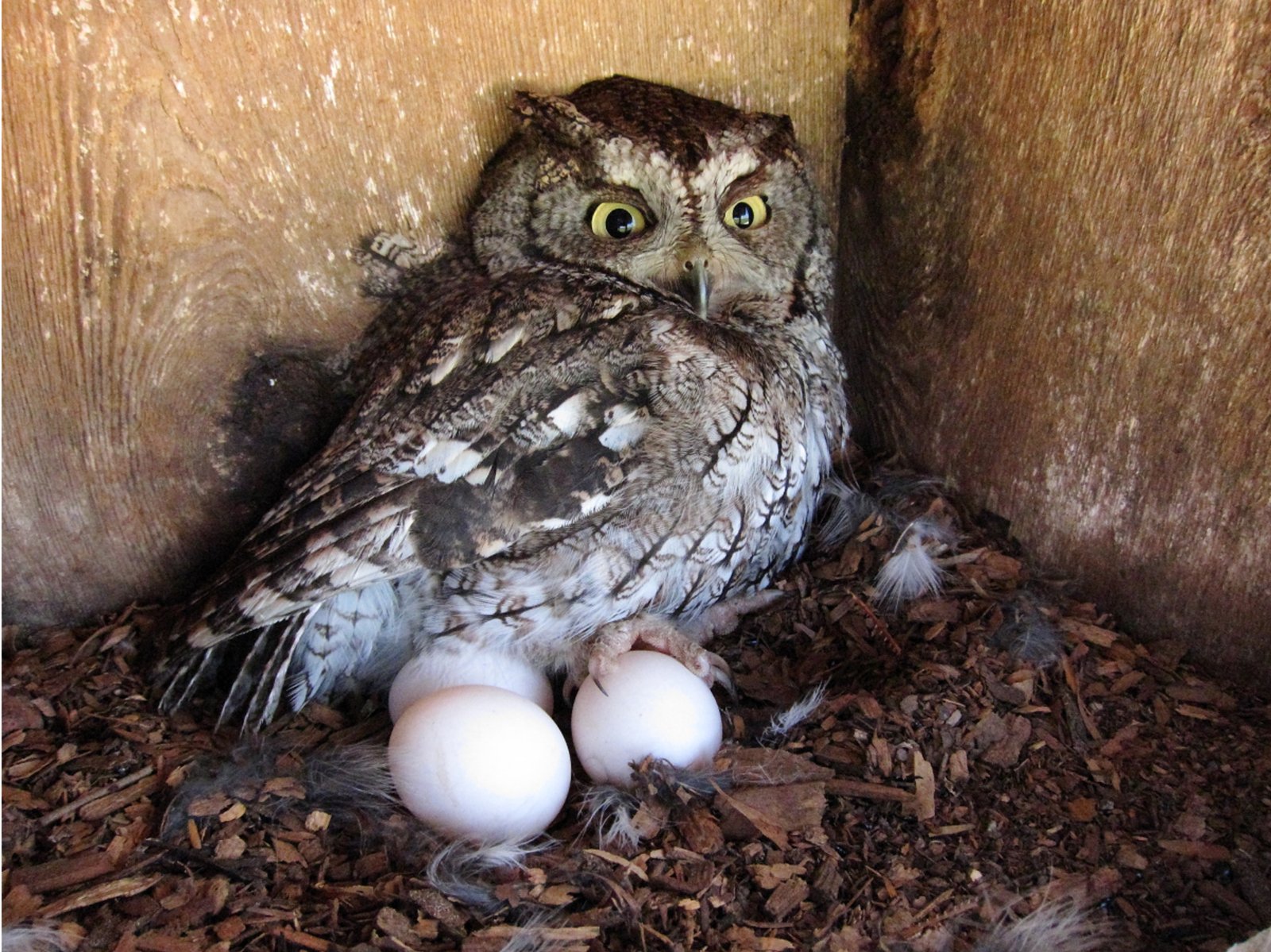
When Do Great Horned Owls Lay Eggs?
In North America, Great Horned Owls lay their eggs from late winter to early spring, usually from January to March. Their breeding season can differ depending on their location and climate. They may begin breeding earlier in the year in the southern regions, while they may begin breeding later in the northern regions.
Great Horned Owls are known to be early breeders, frequently beginning their breeding season before other owl species. The female owl will lay her eggs in a stick nest lined with softer materials like feathers or fur. The nest is usually found in a tall tree, but it can also be found on cliffs or other high places.
Great Horned Owls typically lay 2-3 eggs per clutch, which are incubated for 30-35 days by the female owl. Once the eggs hatch, the parents will feed the young owls a diet of small mammals, birds, and reptiles until they are ready to leave the nest and fend for themselves.
When Do Snowy Owls Lay Eggs?
Snowy owls lay their eggs in the summer, usually between late May and early July in the Arctic regions where they breed. Their breeding season can differ depending on their location and climate.
Snowy Owls are migratory birds that breed in the Arctic tundra and spend the winter in warmer climates. The female owl lays her eggs in a shallow depression on the ground, usually on a raised area like a mound or small hill.
She may also line the nest with plants or other materials. Snowy Owls typically lay 3-11 eggs per clutch, which are incubated for 32-34 days by both the male and female.
When Do Barred Owls Lay Eggs?
In North America, Barred Owls typically lay their eggs in late winter to early spring, from February to April. Their breeding season can differ depending on their location and climate. The female owl will lay her eggs in a stick nest lined with softer materials like feathers or fur.
The nest is usually found in a tree cavity, but it can also be found higher up, such as on a large branch or in a dense thicket. Barred Owls typically lay 2-4 eggs per clutch, which are incubated for 28-33 days by the female owl.
When Do Barn Owls Lay Eggs?
Barn Owls typically lay their eggs between the months of March and June in North America. Their breeding season can differ depending on their location and climate.
The female owl will lay her eggs in a nest made of pellets, feathers, and other debris, usually in a dark cavity like a tree hollow, barn, or other man-made structure. Barn Owls typically lay 4-7 eggs per clutch, which are incubated for 29-34 days by the female owl.
When Do Burrowing Owls Lay Eggs?
Burrowing Owls typically lay their eggs between the months of April and June in North America. The female owl will lay her eggs in a burrow dug in the ground by the owl or by another animal such as a ground squirrel or prairie dog. Burrowing Owls typically lay 5-7 eggs per clutch, which are incubated for 26-28 days by both the male and female.

